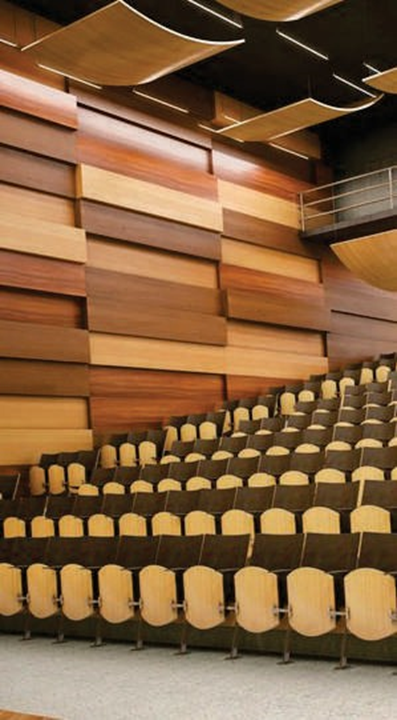Auditoriums
Uses in Auditoriums
Theatres, opera houses, auditoriums and concert halls are buildings designed specifically for the enjoyment of the arts and music. In addition, their relationship to art makes them particularly important architectural works in a city’s public buildings.
One of the key tasks in designing and implementing the architectural design of these buildings is to pay particular attention to architectural acoustics —the branch of acoustics applied to architecture, which studies local acoustic control in premises and buildings— both to achieve proper soundproofing between enclosures, and to improve acoustic conditioning inside premises. Therefore, these buildings often have sound-absorbent wood interiors, acoustic panels, wood ceilings and all kinds of acoustic material designed to achieve optimum acoustic conditioning in the building.
Of all the acoustic parameters to be considered when carrying out the acoustic conditioning of a space for listening to music, one of the most important ones is “reverberation time”. This is the time lapse in a particular enclosure from the moment when a sound is produced until its intensity decreases to one-millionth of its original value. Another way of defining it, perhaps more clearly, is that “reverberation time ” is the time it takes for the sound to decay by 60 dB as received stood the sound emission source stops. In fact, “reverberation time” is what determines whether a theatre is best for symphonic music (more reverb) or for plays or operas in which words are spoken (less reverb).
In either case, in the construction of these buildings it is essential to use acoustic material especially designed for acoustic conditioning, such as sound-absorbent wood acoustic panels applied to inner linings, wood walls and acoustic ceilings that allow one to adjust reverberation time to the levels that are considered best for each hall.

